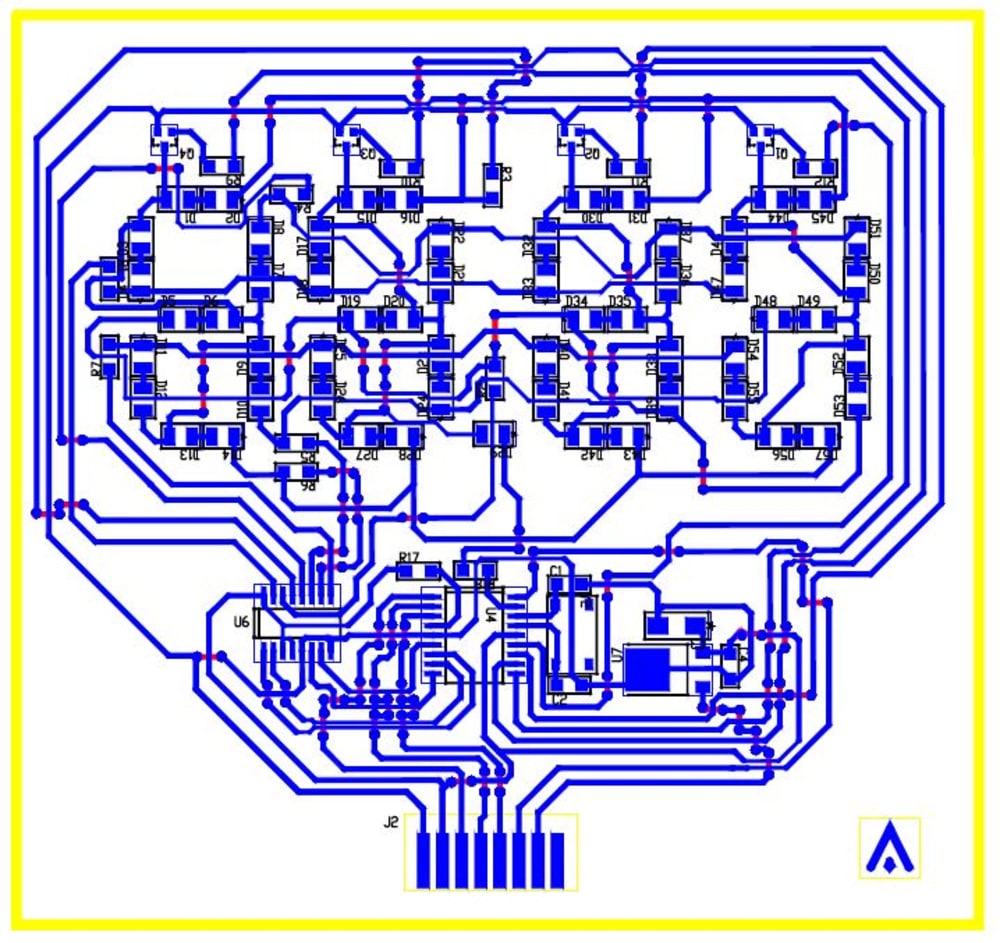We propose the project of a digital watch, realized by means of inkjet printed silver conductive tracks based on an innovative nanostructured ink, over a glass substrate. The transparency/translucency of glass may result in interesting aesthetic effects depending on the color of the underlying wall/support. Each part of the circuit is visible, including the silver tracks that assume, together with their functional role, a decorative one.
Primarily, the novelty of our proposal resides in the technology used to realize the conductive tracks. Inkjet printing technology is an additive manufacturing process, enabling the direct realization of complex-shaped patterns, with a maximum resolution of 50 micrometers. The process consists in the delivery of droplets of silver nanoparticle solution where needed, on bare glass (pyrex); after the positioning of the conductive material, a thermal treatment takes place, to sinter the nanoparticles and ensure electrical conductivity. In conclusion, the process is straight-forward, cost-effective and environmentally friendly, since no material is wasted. Traditionally, conductive copper tracks of PCBs (Printed Circuit Boards) are realized by means of optical lithography, which by contrary is a subtractive process: one starts with a homogeneously metalized board covered by a photo-sensitive polymer, then exposes the polymer to a UV radiation, masking some parts according to the tracks geometry and finally removes both the polymer and the underlying metal where wanted in the exposed areas. This generates chemical waste and critical raw material consumption: copper primary sources will run out in the next 35 years. The ink is also an interesting innovation: it contains silver nanoparticles in a well controlled size distribution, together with stabilizers, compatibilizers and surfactants.
As far as we know, no commercial inkjet printed watch is now available, allowing a unique aesthetic layout of the circuits, a transparent support and a high readability for users. The market potential is enormous, each watch representing an interior furnishing piece for private homes and offices. The object will be produced by means of inkjet printing, pick&place positioning of the components and reflow oven annealing for small numbers. If necessary, for higher throughput, instead of inkjet printing silver tracks it will be possible to develop a faster and cheaper printing technology, such as tampography, which we are investigating as well.
The circuit is a single layer one, based on a programmable IC (Microchip PIC16F84), a Texas Instruments LED driver (CD4511B) and four digits composed by 7 segments, each one composed by two SMD LEDs.
We already demonstrated the feasibility of inkjet printing conductive tracks on pyrex, realizing a blue LED demonstrator by soldering discrete components on the printed tracks. A picture is enclosed to clarify the potentiality of our technique.
Like this entry?
-
About the Entrant
- Name:Alessandro Chiolerio
- Type of entry:teamTeam members:Alessandro Chiolerio
Paolo Pandolfi
Marco Cotto - Patent status:none





